The ever-present threat of an epileptic seizure shattered Aparna Nair's sense of safety. But a special bond with her dog Charlie provided an unexpected ally in her struggles with epilepsy and the outside world.
The seizure dog
Words by Aparna Nairartwork by Tracy Satchwillaverage reading time 6 minutes
- Serial

Like many children who grow up with chronic illness, I lost the comfort of that fiction of eternal good health when I was diagnosed with epilepsy at the age of 11. Sometimes I can’t stop thinking about how the next time I have a seizure I might be crushed by rush-hour traffic, or fall down a flight of stairs so hard I crack my skull open like Humpty Dumpty, never to be put back together again.
These fears aren’t things you can easily tell your family and friends. They aren’t always managed with therapy. They become a part of your world: you become familiar with them, make room for them and learn to live with them. Epilepsy shattered my sense of safety in the world.
Charlie's sense for seizures
Then, in 2017, I adopted my dog Charlie. A dappled black, white and grey charmer of indeterminate breed with short legs and an incongruously barrel-shaped body, Charlie has milk-chocolate eyes that seem to reflect all the sorrows of the world.
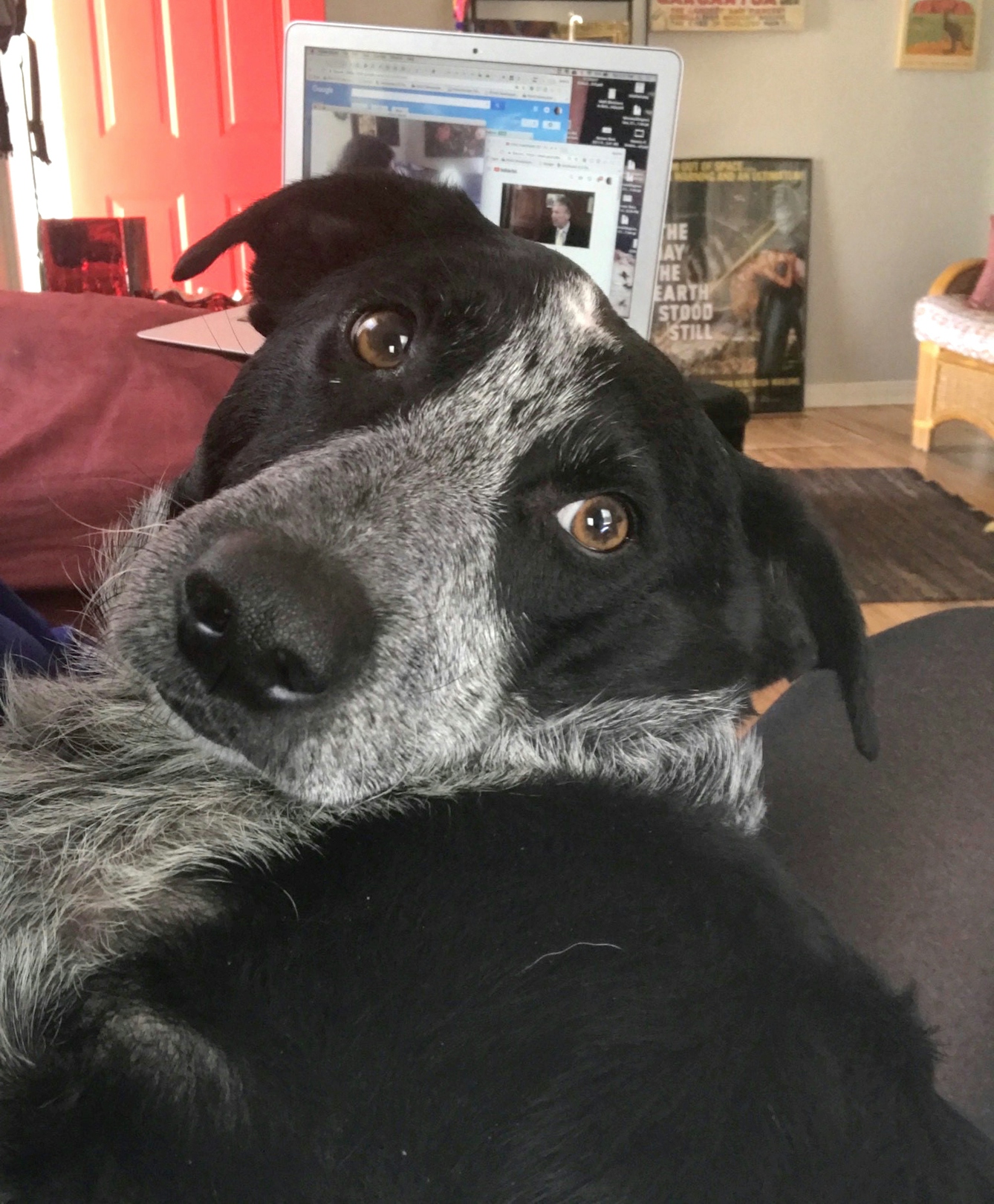
Charlie relaxing at home.
For the first months of his stay with me, Charlie was reticent and distrustful of all human contact, including mine, but he gradually warmed into an affectionate, albeit insecure dog. For months, he remained my faithful companion and nothing more.
One October night, after I returned home from a run, I began to feel a strange sensation coming over me. I should have realised it was an aura (that rising change of perceptions and sensations that always precedes my seizure), but because it had been a while since I had had a seizure, I did not recognise it for what it was.
Charlie seemed to sense that something was wrong with me. He began to act very unusually for him. He jumped up at me, leaping off the ground on his short, thick legs and whining. It took me a while to process that he was warning me I was about to have a seizure.
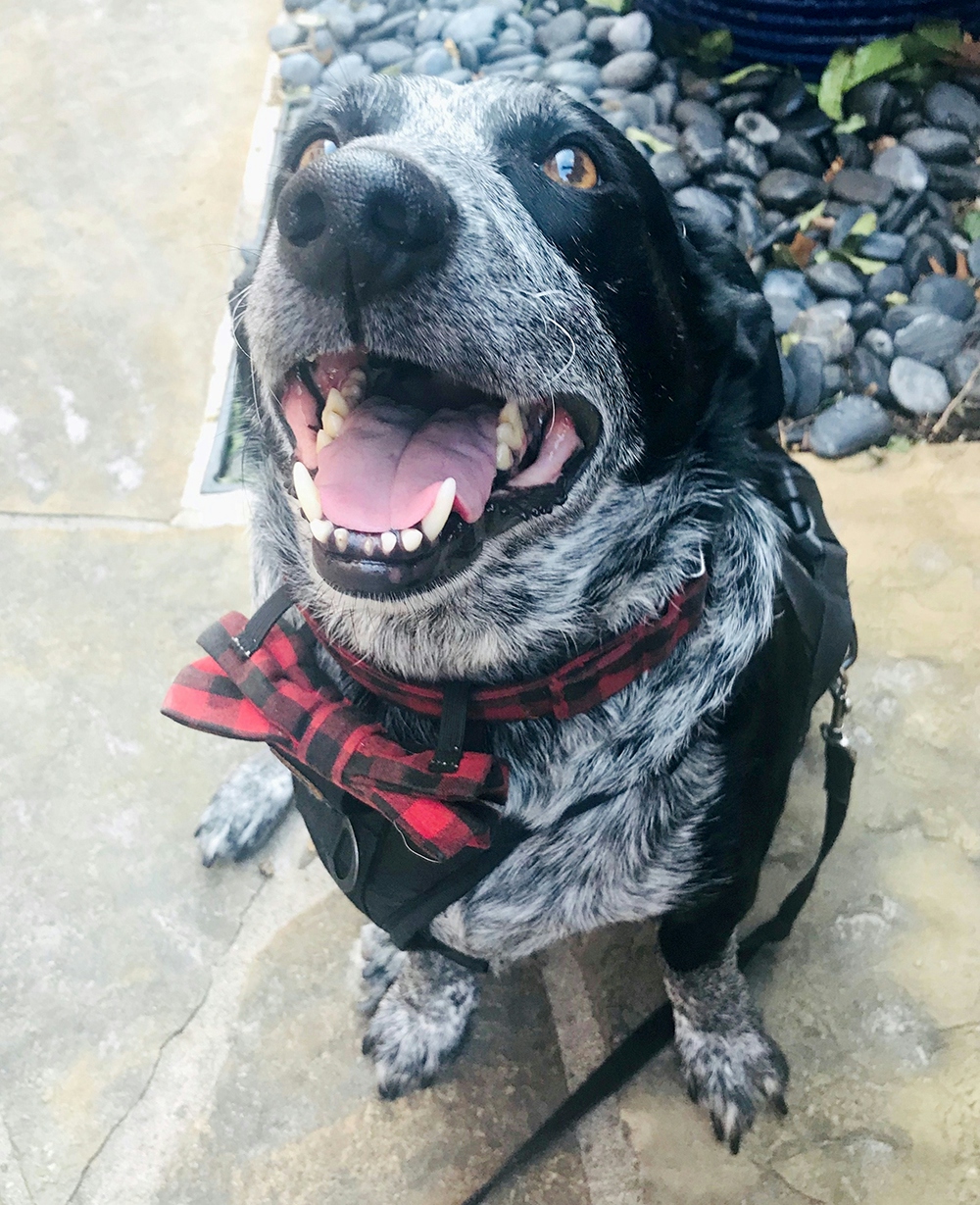
Charlie can recognise when Aparna is developing a pre-seizure aura.
And during this particularly stressful period of my life, I found him continuing to warn me when I was about to start an aura or have a seizure. He would force me to sit down, often jumping up and placing his sturdy little body on top of my chest. I would feel his rapid heartbeat against my skin, calming me down and slowing my pulse. And his soothing presence sometimes prevented an aura transitioning into a seizure.
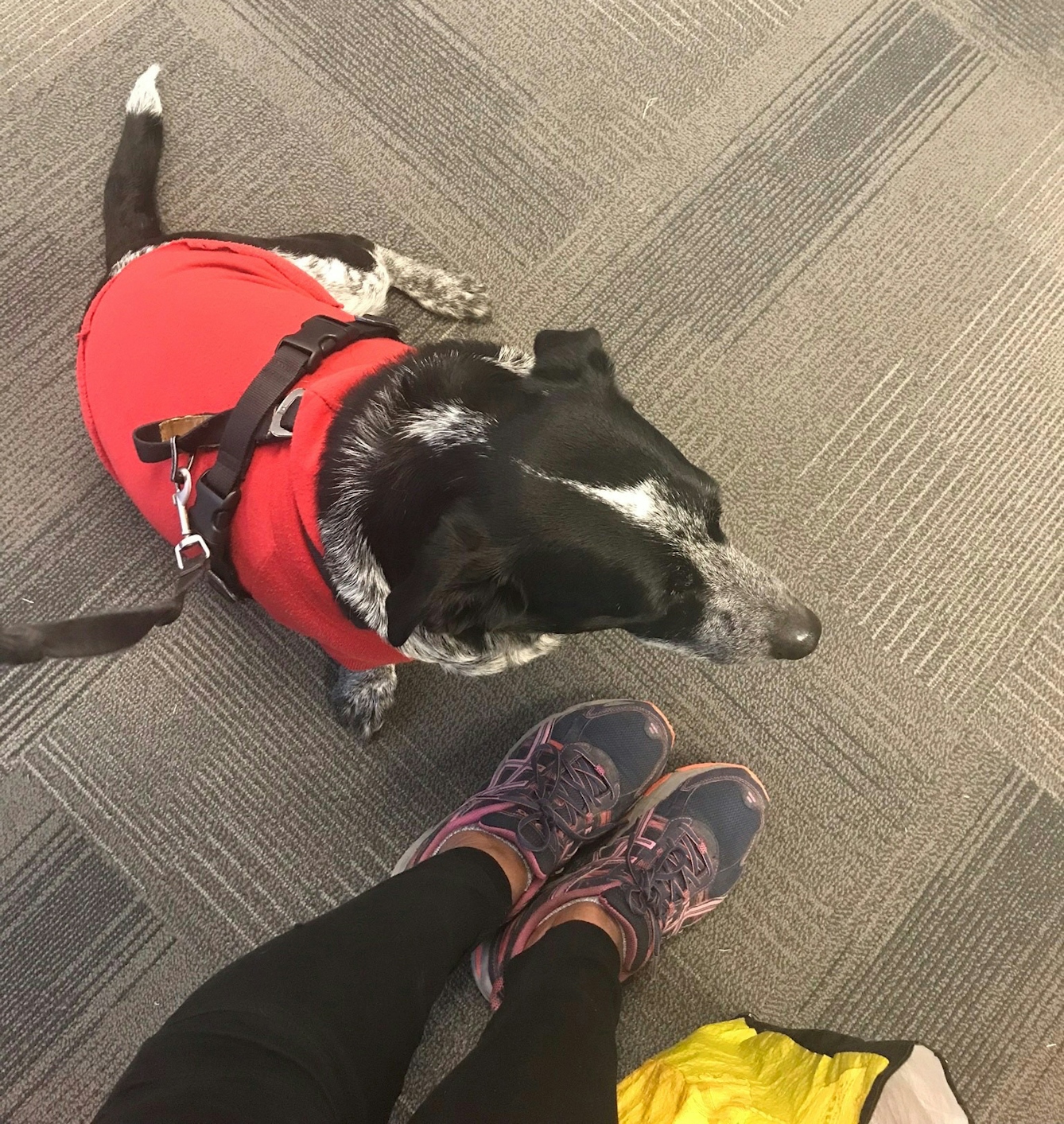
Out and about with Charlie in service-dog mode.
When I woke up after a seizure, his worried, fuzzy face was the first thing I saw. At first, I thought he was just comforting me, picking up on my obvious emotional distress when I was ill and responding as many companion dogs do. It took me a while to accept that I was not imagining things, and that he apparently had the ability to interpret and anticipate signals from my recalcitrant brain for me even when I could not.
Since I accepted his abilities, he has received additional training as a service dog to ensure that he is safe to be in public spaces, and that he responds to my commands without question.
From guide dogs to service dogs
I suppose that, technically, Charlie would be considered a seizure-alert dog. Both seizure-alert and seizure-response dogs are relatively new phenomena in the social support for epilepsy.
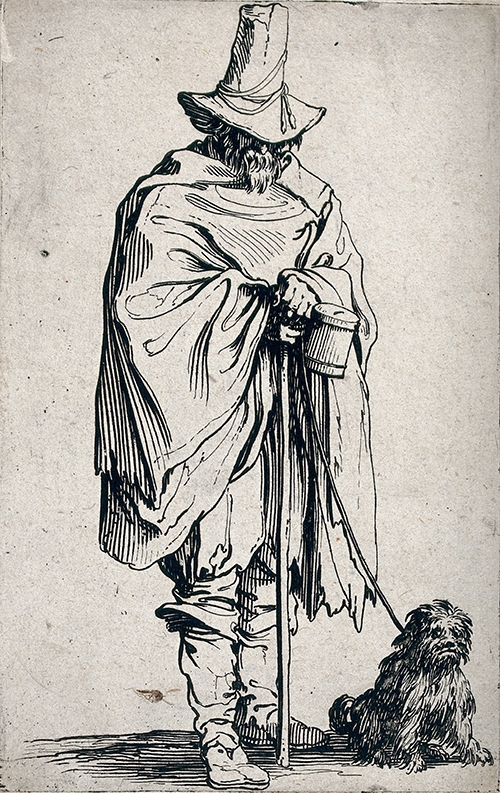
A blind man with his dog. Etching by Jacques Callot, c. 1622.
Trained guide dogs for blind people have been around for over a century. In multiple roles in the German Red Cross during World War I, dogs demonstrated their intelligence and adaptability to human needs. And guide dogs were trained to aid veterans who were blinded in combat. Slowly, guide-dog training programmes spread across Europe and into the Americas by the late 1920s.
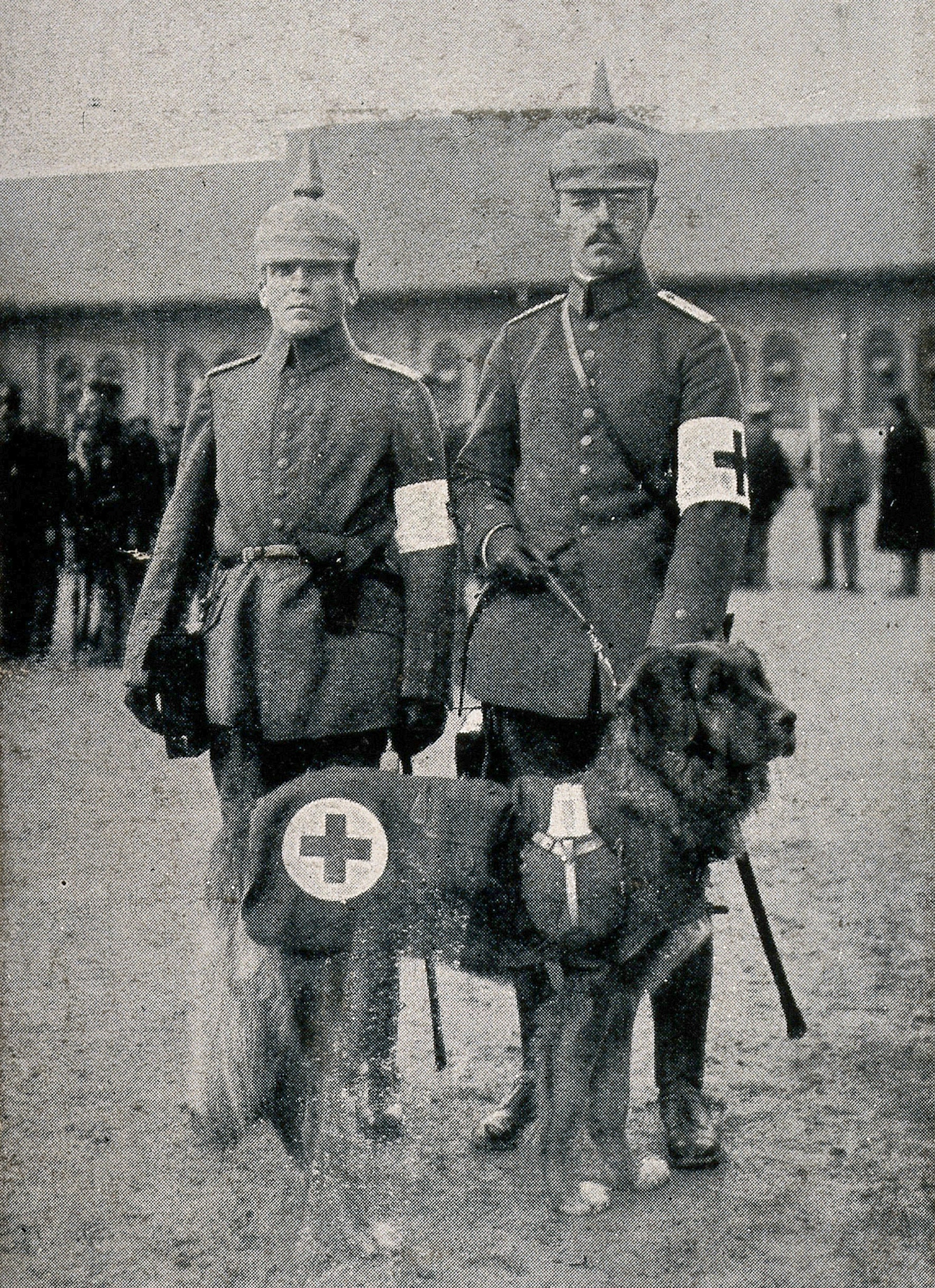
The success of service dogs in the German Red Cross during World War I led to training programmes for guide dogs for blind veterans.
The use of these dogs to support people with other disabilities and conditions has taken longer. In the 1980s, signal dogs for deaf people became popular in some parts of the world, and dogs were also being trained to provide assistance with mobility issues. Today trained dogs provide physical assistance for people with an increasingly broad range of disabilities and chronic illnesses.
Anecdotal reports of dogs assisting to people with epilepsy began to emerge in the 1980s. In 1988, San Francisco native James Maaske described to local newspapers how he had stumbled on to his dog’s abilities by accident. One morning when he woke, his dog Agee began following him around the house, staring at him intently. Then Maaske noticed that his bed sheets were rumpled and torn, suggesting that he had had nocturnal seizures, and this was what the dog was silently trying to convey to him.
At the time his claims about the dog were dismissed by a representative of the Epilepsy Society. But in the 1990s and 2000s, small-scale studies were carried out, testing the abilities of seizure dogs. The findings were inconclusive, but suggested that having a dog could increase the owner’s quality of life and reduce the frequency of seizures.
Science versus instinct in seizure dogs
We do not yet know if seizure dogs might be picking up on a range of possible cues, including variations in human behaviour, smell and changes in heart rate to sense a seizure. But it appears that their abilities are not restricted to any particular breed, or the product of training, but something they are born with.
Seizure-alert and assistance dog training programmes now offer service dogs for people with epilepsy across the world. Although it has tended to be people with epilepsy who recognise and advocate for the value of seizure dogs, while the health and medical establishment remains cautious.
For me, whether Charlie’s abilities can be verified scientifically is beside the point. I am not sure I even need to have them confirmed. What I am sure of is that I have learned to always pay attention to him or suffer the consequences.
Charlie gave me back the courage to leave my home, and to work and move about freely. Whatever the basis of Charlie’s abilities, or the fate that brought him to me, I know that he senses when my physical or emotional fatigue crosses the threshold into an impending seizure. He leads me to safety when I am about to crash, and he sits quietly by my side, waiting for the storm to pass. His constant presence reassures me that I am not alone in my struggles with epilepsy. I have at last found safety.
About the contributors
Aparna Nair
Dr Aparna Nair is an assistant professor in the Department of History of Science at the University of Oklahoma. She works on disability, medicine and colonialism in India in the 19th and 20th centuries, as well as disability in popular culture and the experience of epilepsy in South India.
Tracy Satchwill
Tracy Satchwill was born in London, grew up in South Wales and is now based in Norfolk. Working across film, collage, photography and installation, her art practice explores female power, reflecting on its removal or reclamation. She weaves personal narratives into her work, exploring identity, oppression and vulnerability to combine the feminine with the surreal, the uncanny and the weird. Satchwill has exhibited at galleries and institutions across the UK and internationally. She also works on public commissions and residencies, focusing on women’s experiences.

